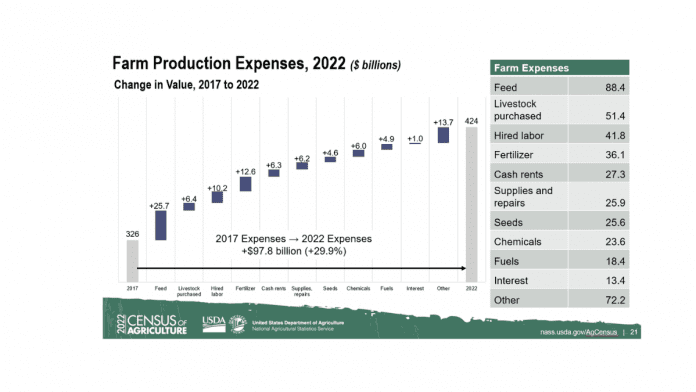News in brief:
– USDA’s 2022 Census of Agriculture reveals Wisconsin’s agricultural production surged by 46% to $16.7 billion, showcasing diversity beyond traditional crops.
– Despite a 10% decline in the number of farms, Wisconsin farmers embrace technology with 79% having internet access, while younger operators signal a shift in leadership dynamics.
The recently released 2022 Census of Agriculture by the US Department of Agriculture (USDA) has unveiled remarkable insights into the state of farming across the nation.
Notably, Wisconsin stands out with a staggering $16.7 billion in agricultural production, marking a remarkable 46% increase from 2017. Greg Bussler from the National Agricultural Statistics Service in Madison highlights Wisconsin’s diverse agricultural landscape, emphasising its reliance on more than just dairy, corn, and soybeans.
The state remains a powerhouse in niche markets, retaining its top positions in ginseng, cranberries, canned green beans, and other specialties.

Shifts in farm dynamics
Despite the impressive surge in production value, Wisconsin witnessed a decline in the number of farms, dropping by approximately 10% to 58,521 farms by the end of 2022. This trend reflects broader shifts observed nationwide, indicating a transformation in agricultural demographics and operations. The census also underscores the impact of development, contributing to a 3.7% reduction in total farm acreage across the state.

Technological integration continues to shape Wisconsin’s farming landscape, with 79% of farms having access to the Internet, predominantly through mobile providers. Moreover, the average age of farm decision-makers in Wisconsin is reported at 56.7 years, reflecting a trend toward younger individuals taking on leadership roles within the industry.
Wisconsin farmers demonstrated a strong commitment to data collection, boasting the second-highest census return rate in the nation at 68.8%. This active engagement underscores the importance of community involvement and data-driven decision-making in shaping agricultural policies and initiatives.

Key takeaways
- Diversification and Economic Growth: Wisconsin’s agricultural sector showcases resilience and adaptability, with significant growth across diverse product lines.
- Adapting to Change: Despite a decline in the number of farms, Wisconsin farmers are embracing technological advancements and innovation to enhance productivity and efficiency.
- Youthful Leadership: The rise of younger farm operators signals a promising future for Wisconsin’s agricultural sector, infused with fresh perspectives and ideas.
- Environmental Stewardship: There is an evident uptick in conservation efforts, reflecting a growing awareness and commitment to sustainable farming practices.



